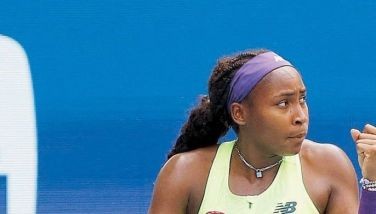Good times for boxing
A gargantuan confluence of circumstances is towing Asia to the dominant position in professional boxing. The domino effect of political and economic upheaval has redounded to the benefit of the region. Here are some of those factors.
The giant awakens. Asia has more than 20 reigning world boxing champions, and an even bigger number of contenders. The continent has a population of roughly 4.7 billion people, the largest by virtue of population density by far. It encompasses 49 countries and the Chinese territories of Hong Kong and Macau. Given this tremendous grassroots potential, as the market grows, even more Asians will work their way up the boxing ladder. Say all you want about the diversity of Asia, a lot of people want to be pro boxers and make large purses. In fact, Malaysia, which spent its money on sports like bowling in the last few decades, is now investing millions of dollars on boxing events.
They’ve learned English. Many nations have learned English over the years, and it’s not just the millions of eastern European emigrants who fled war to the US. True, millions escaped conflict and persecution during the first two world wars, but it is also the language of the business. Boxing was formalized by the British and promoted by Americans. To succeed in the pro game, you need to deal with the Americans. You have to be able to communicate with them in a way they understand.
Blending of amateur boxing. The lines between amateur and pro boxing have blurred in the last decade. Amateur rules have blended with pro rules; pros can now compete in the Olympics. In women’s boxing, pros with up to 15 fights can still compete in the amateurs. In the late 20th century, European pro athletes in other sports like basketball and ice hockey could revert back to amateur status when the situation warranted by virtue of a simple declaration.
Soviets catch up. Though Russia is not considered part of Asia (despite 77% of it being geographically within the region), its influence has been huge. The 17 nations in the former USSR developed strong amateur programs. It is only now that they are discovering that earning money as a professional boxer will not sentence you to eternal damnation. Kazakhstan and Uzbekistan are proof of this emergence. Gennady Golovkin is considered one of the best boxers in the world. Other amateur boxers in past or present communist countries are following his example. Gone are the days of Cuban three-time Olympic heavyweight champion Teofilo Stevenson, who never turned pro. Stevenson would have beaten the reigning heavyweights of his day, like Muhammad Ali, George Foreman and Joe Frazier.
Japan leads the way. Three of the top 10 boxing countries in the world are Japan, Thailand and the Philippines. Japan has eight world champions, and stages over 200 boxing events a year, roughly 10 percent of all boxing in Asia. Moreover, their bouts are not confined to weekends. Everyman needs entertainment, regardless of day of the week.
Moving up. Malaysia is not the only Asian nation that sees boxing as good business and PR. Sleeping dragon China is slowly coming up, with close to a hundred events a year. South Korea is getting more involved, while promoters see Indonesia as a big new market. Hong Kong, Singapore and Macau, meanwhile, are great venues for gigantic events. Also, Asians are getting bigger, and are infiltrating the higher weight classes. Once, middleweight Ceferino Garcia was the biggest Asian world champion. Now, you have super heavyweights from Central Asia. Times are indeed changing.
Easier access. The advantage Asia has over equally diverse Europe is its time difference with the US. To reach the huge Saturday night pay-per-view audience in America, they just have to hold the bouts at lunchtime on Sunday. Europe, on the other hand, has an awkward time difference with mainland USA. To become famous in America, a European boxer has to live and fight there.
Pacquiao, et al. On a smaller scale, you cannot discount the influence of eight-division champion Manny Pacquiao, Nonito Donaire Jr., and Donnie Nietes. The attention that they have individually and collectively brought to the continent has shifted the spotlight, and impelled promoters to seek out diamonds in the rough or future champions whom they can develop. They know the money to be made, and the length of service a young buck can offer. Pacquiao has been a big commodity in the US market for almost two decades, since he defeated Lehlo Ledwaba.
All things considered, Asia will be recognized as the greatest pool of boxing talent within the next decade. There is no denying it, no escaping it.
- Latest
- Trending

























